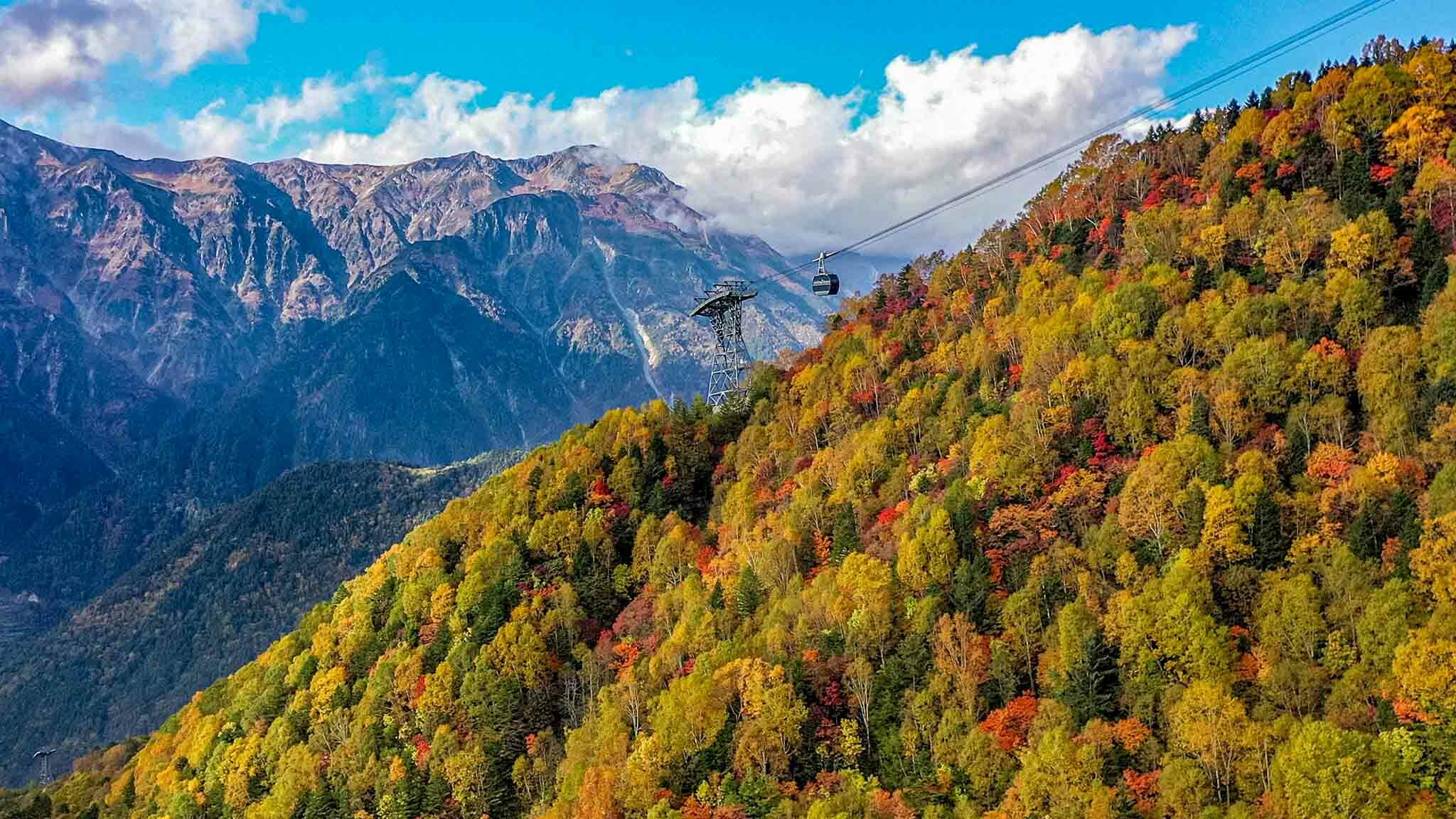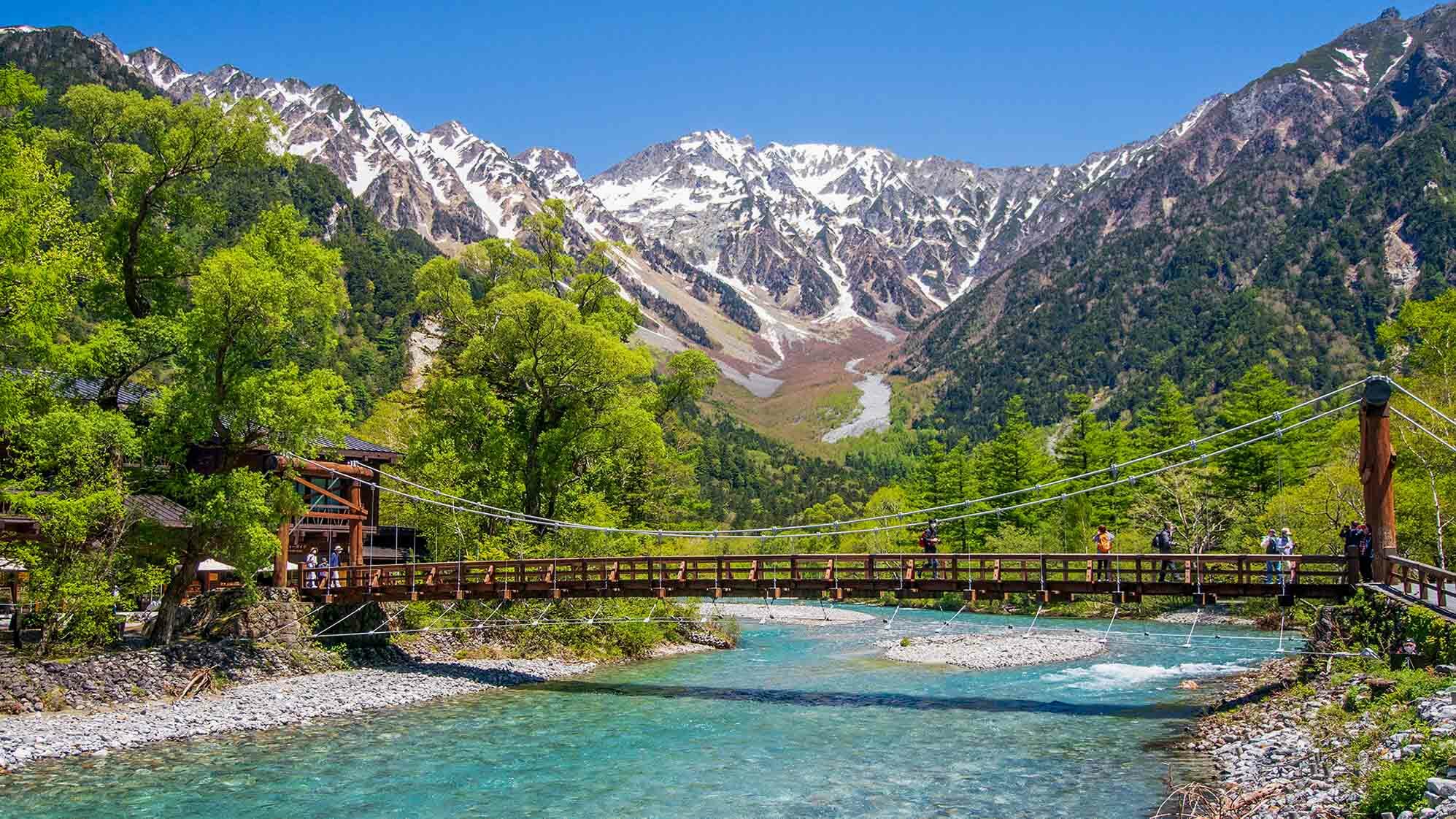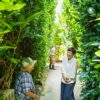
Journey Beyond the Ordinary
Discover contemporary luxuries, breathtaking nature,
and meaningful experiences
Luxury travel has undergone a paradigm shift in recent years, with travelers searching more for immersive experiences and cultural understanding rather than pure pampering. Nowhere is more attuned to luxury’s new normal than Japan. From Hokkaido in the far north to Okinawa way down south, Japan doesn’t just offer visitors a range of contemporary and traditional luxury accommodation, but it delivers refined hospitality and a wealth of exclusive experiences that give travelers a deeper connection to the local culture.

Cultured Escapes
Hokkaido’s Shiretoko National Park is a World Natural Heritage Site with a rich natural ecosystem that is home to diverse fauna including brown bears, Steller’s sea eagles, and Blackiston’s fish owls. Venture to this protected natural reserve and be rewarded with stunning year-round scenery and opportunities for outdoor adventure, with options like private guided tours to see coastal drift ice, hiking around the scenic Shiretoko Goko (Five Lakes), or exploring the Kamuy-wakka hot-spring waterfalls.

Elsewhere in Hokkaido, Niseko is Japan’s premier winter resort area known for its high-quality powder snow, and skiing and snowboarding options that range from family-friendly runs to backcountry heli-skiing. There’s also a growing collection of sumptuous accommodation including Seasons, an ultra-luxury ski-in home with indoor heated pool, private cinema, 1,000-bottle wine cellar, and services including a private chef, driver, and in-home massage.
To connect deeper with the country’s rich heritage, venture to Hokkaido’s largest city, Sapporo, where you can immerse in the culture and cuisine of the indigenous Ainu at Umizora no Haru. In a private dining room designed to look like a traditional Ainu home—complete with open hearth—enjoy traditional Ainu dishes few travelers to Japan ever get to experience, like ohaw soup, grilled sika deer, and a pounded salmon dish called citatap.
Timeless Journeys
On Honshu, the largest of Japan’s four main islands, there are endless possibilities for cultural immersion—be that the refined culture of the ancient capital of Kyoto or the contemporary flair of Tokyo. But for a journey off the beaten path, head to the laid-back cities of Matsumoto and Takayama by Japan’s Northern Alps.

Matsumoto is best known for its 16th-century castle, Matsumoto Castle, one of the five original castles in Japan listed as national treasures, but is also a hotspot for arts and music which flourished as the castle and city rose to prominence. The nearby city of Takayama also wears its past with pride, most notably in the Takayama Historical District, designated as a Nationally Recognized Important Historical Building Preservation Area for its charming old wooden buildings. Twice a year, the district hosts a centuries-old festival that sees parades of giant, ornately decorated floats, the preservation of which has helped sustain the Hida Shunkei Nuri lacquerware and Ichii Itto-bori wood carving industries. Private tours offer a closer look at these regional arts and crafts, as well as highlighting the region’s culinary traditions like the highly prized Hida beef and distinctive sake.
Both Matsumoto and Takayama also serve as jumping off points for exploring the Alps. For hikers, that includes the stunning mountain scenery of Kamikochi, while for traditional luxury there are the open-air hot springs and ryokan inns of the Okuhida Onsengo area—places like the adults-only Kakurean Hidaji, where all rooms come with private open-air and indoor hot-spring baths, and Yamazatonoiori Soene, a traditional inn with a Tangible Cultural Property-registered main wing that features tatami mat rooms.
Sacred Traditions
The ancient Iseshima region, 93 miles (150 kilometers) southeast of Kyoto, has been an important spiritual site for millennia, largely due to the 2,000-year-old Ise Jingu, Japan’s most sacred shrine, home to a serene collection of buildings enshrouded by nature. Strolling around Ise Jingu by yourself is a wonderful experience, but opt for a private guide to gain invaluable insight into the shrine’s history, culture, and the importance Shintoism—Japan’s indigenous religion—places on coexistence with nature. Add a behind-the-scenes culinary element and visit local artisans like Sakatoku Kombu, who hand-shave the kelp traditionally left as a food offering to Ise Jingu’s gods.

Nearby, spend a day with the region’s female-only Ama divers, who for generations have been freediving the rugged coastline to catch abalone, scallops, and horned turban. With the most exclusive tours, you can join an Ama on a dive, then help grill the day’s catch at an amagoya fishing hut, all the while learning about the traditional Ama way of life.
For a choice of accommodation that showcases the nature and culture of the region, the luxury ryokan-inspired onsen resort of Amanemu—overlooking scenic Ago Bay in Iseshima National Park—offers five-star hospitality alongside rare experiences such as the chance to visit local artisans who produce kombu, salt, and dried bonito flakes traditionally offered to the deities at Ise Jingu.
Nature’s Oases
In the far south of Japan, sun-kissed Okinawa offers travelers a taste of island life, alongside opportunities to explore its pristine natural environment and experience the islands’ distinctive Ryukyuan culture—a mix of Chinese and Japanese influences from when Okinawa was an independent kingdom.
Head to Yambaru National Park, a World Natural Heritage Site in the north of Okinawa’s main island, for kayaking adventures and forest treks with private guides from Higashi Village. Learn more about the local way of life at Yambaru Nammei Shinshitsu in the centuries-old village of Jashiki, where the hotel has teamed up with the community to offer activities such as cooking classes and the opportunity to learn about ancient seafaring traditions from local sabani boat makers.
Yambaru is also home to the village of Ogimi, known for its high number of centenarians—attributed to the combination of community support networks and incredibly healthy traditional diet found across Okinawa. Traveling across the islands, you might hear the phrase ‘nuchi gusui’ (‘food is medicine’), something chefs at Mauvaise Herbe and Gettouan keep close to heart as they honor traditional produce and culinary arts while serving up contemporary fine dining.
Whether going off the beaten path to Okinawa, Hokkaido, or points in between, there are ample opportunities for modern-day luxury travel in Japan, where exclusive activities allow travelers to immerse themselves in local culture and leave the country with not just a deeper appreciation of its culture and traditions, but with memories to 




























